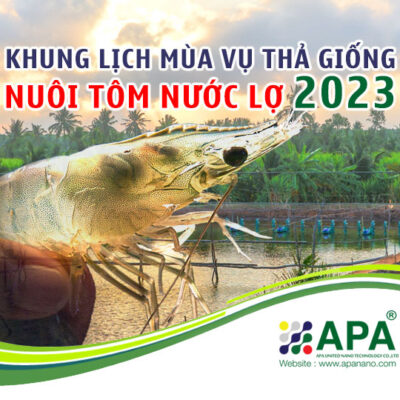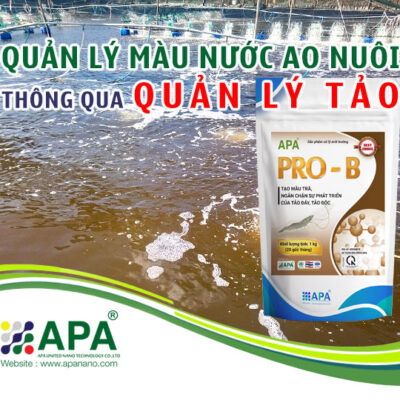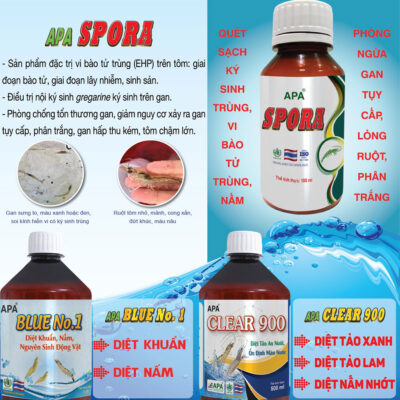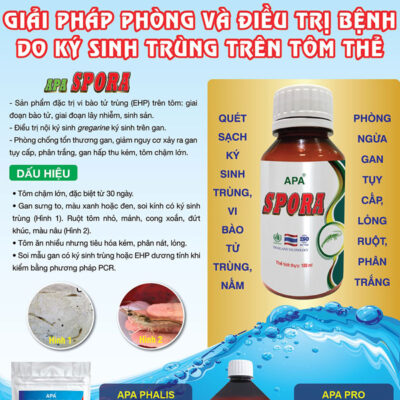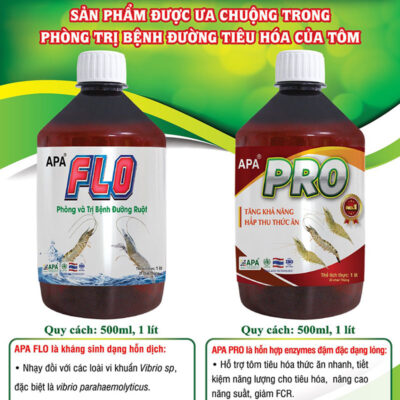I. PREPARATION BEFORE CULTURE SHRIMP
1. UNDERSTANDING BASIC LAYOUT OF A SHRIMP FARM
Basic design of a shrimp farm is described in Figure 1.


– Water inlet: a source of water (sea, river, channel or well (underground water).
– Water sediment and treatment pond: is used to reserve water and reducing water turbidity.
Farmers should adding water in to this pond when they has clean water from outside (example: high tidal days, when no neighbor farms discharge) to reduce pollution and treatment cost. After pump in to pond, mud and sediments in water will sink to bottom, farmer will pump clean layer of water in to water treatment pond. A large volume of reserve pond water will help farmer reduce risk of disease from external infecting.
Treatment pond could be the same with sediment pond if farmer does not have enough area.
– Grow out pond is the place farmer grow shrimp: in modern farming, there can be 2-3 steps of growing shrimp. Example, step 1-rearing post larva (2-3 weeks) in small pond or a part of big pond. Step 2- grow shrimp in 1-2 months until biomass exceeded. Step 3 – partly move shrimp in to a new pond or partly harvest to reduce biomass, give shrimp more space to grow up. By using multi steps, farmer can rotate crop faster and increase yearly harvest yield.
– Sediment pond is used to control shrimp escape, collect waste and disinfection water before discharge to nature environment. Waste is included shrimp shell, died shrimp, shrimp feces, died algae, residual feed, etc.
– Storage is a house to keep feed, chemicals, equipment, machine,… it should be built near grow out pond.
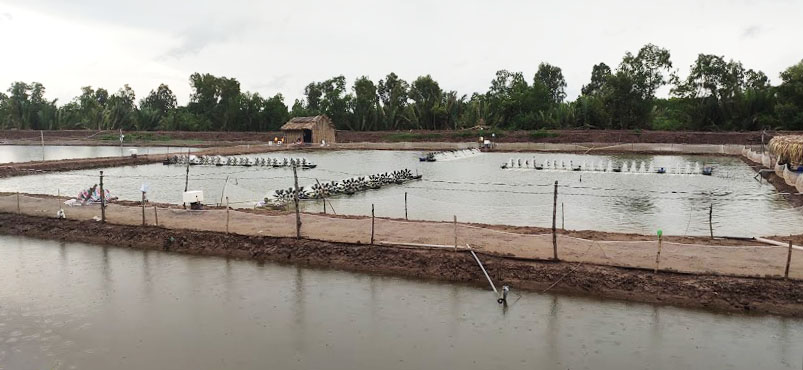

2. BASIC MACHINE AND EQUIPMENT IN SHRIMP FARM
To culture shrimp in intensive pond, below are example of some common machine and equipment.


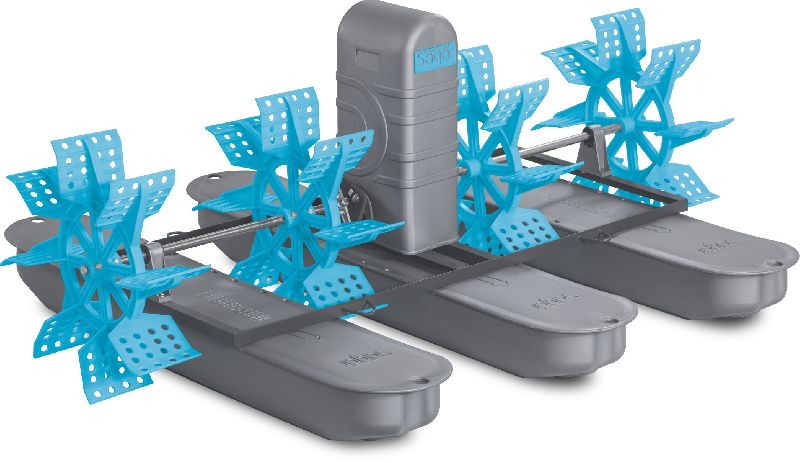

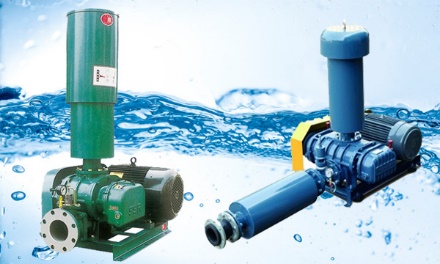

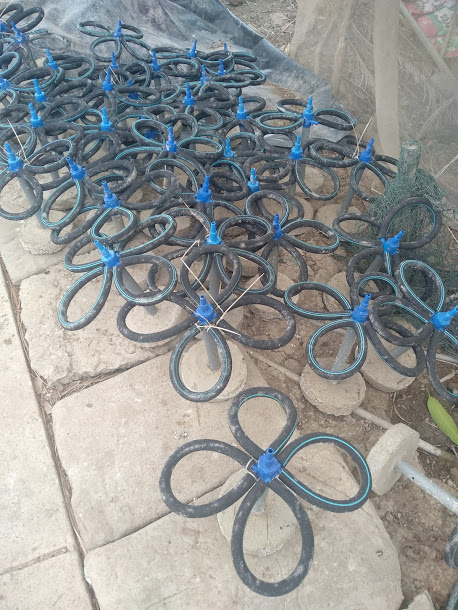

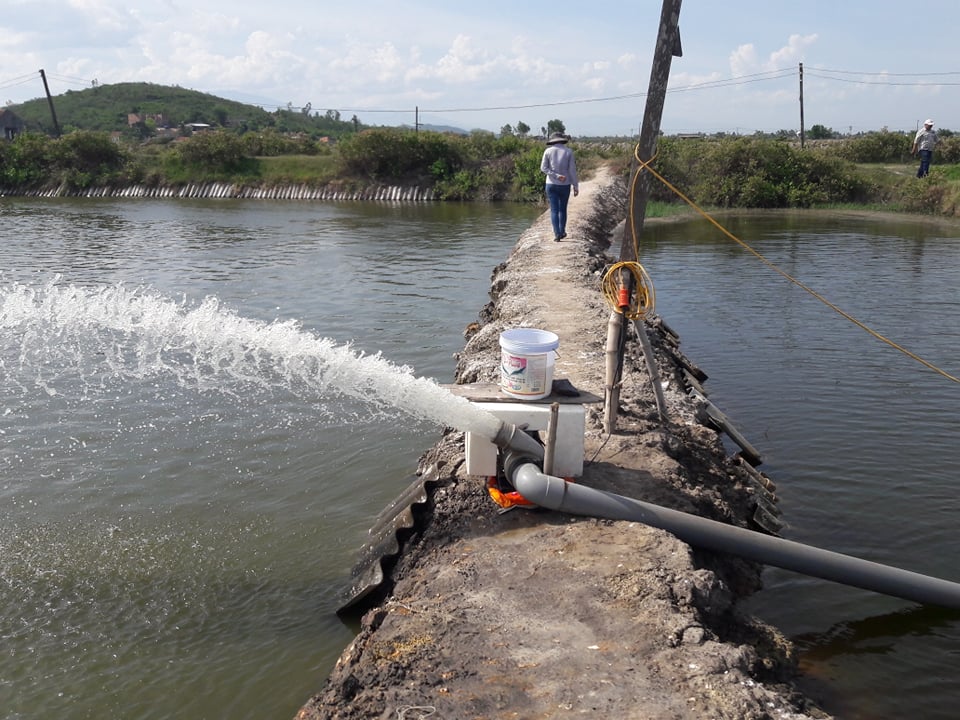



3. POND PREPARATION: STEP BY STEP
Below are six basic steps of pond preparation.


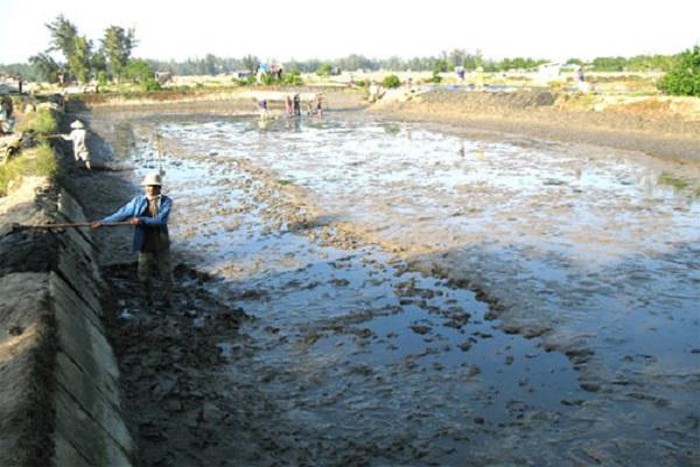

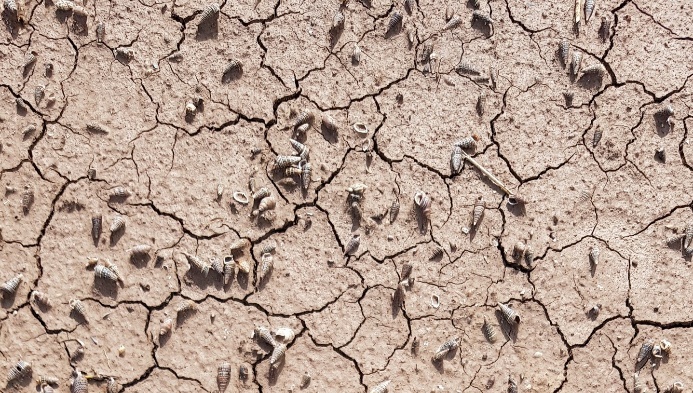

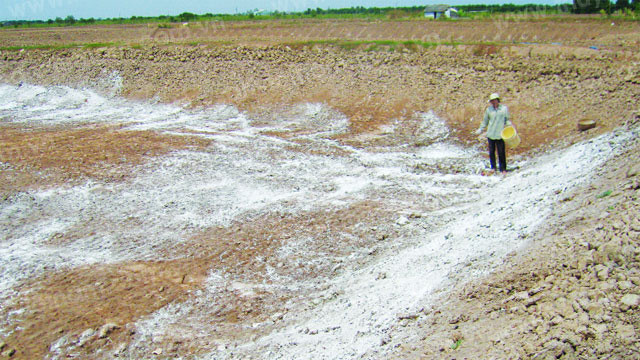



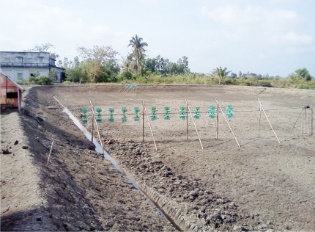

4. WATER SUPPLY AND TREATMENT: STEP by STEP
Use filter bag (mesh size 25-50 micron) to avoid:
– Wild fish, fish eggs.
– Parasite.
– Rubish.
Use APA RON VIP to:
– Clean water, reduce water turbidity.
– Remove Iron, heavy metal.
– Remove pesticide residues, oil, bad odor,…
Use one product: Trichloroisocyanuric Acid or Calcium Hypochloride or APA N900, APA BLUE NO 1, APA LS 600H to kill viral, bacteria, fungus, protozoa, etc.
– Use CaO or (CaOH)2 or CaCO3 to increase pH.
– Use mollase or sugar + APA WIN to reduce pH. Or use acid citric to reduce pH quickly.
– Suitable pH value for shrimp: 7.5-8.5.
Use APA MIN 999:
– Blacktiger shrimp: 80-160 ppm.
– White leg shrimp: 100-200 ppm.
High alkality keeps pH more stable.
Use APA PLANKTON or APA ROTIFE to supply nutrition for growing microalage and plankton (nature feed) for shrimp, also enrich dissoved oxygen.
5. POST LARVA SELECTION AND REARING (WEEK 1 to WEEK 5)
– Choosing pathogen free post larva (PL). Genetics improved post larva is recommended; especially fast growing, big size traits.
– Checking there is no died post larva in transport bag or tank. Shrimp has opaque color is weak; shrimp stick together is stressed – they should be domesticated carefully before releasing to pond.
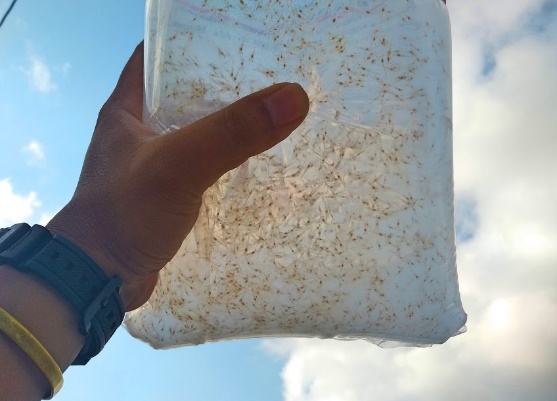

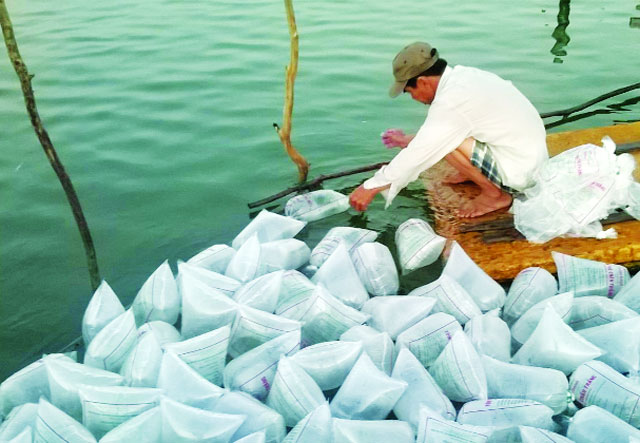

To check shrimp health: challenge a hundred post larva in formol (37% formaldehyde) 200 ppm, if mortality lower than 10% is acceptable.
– Put all shrimp bag in to pond (15 to 30 minutes) until temperature inside bag is equal to pond waters then open bag to releasing shrimp. Post larva will increase molting in several days, use APA SIL CALCI spread to pond to improve shrimp health and molting success.


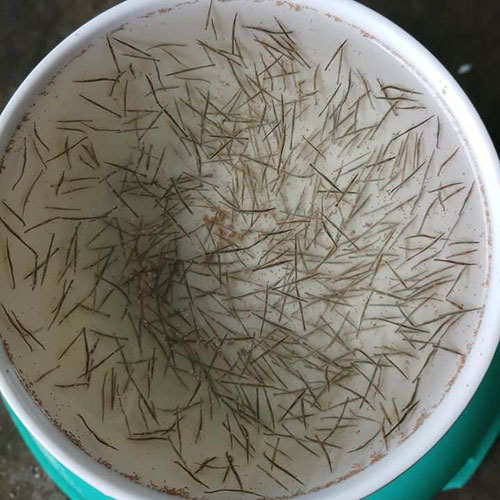

– Applying feed 1-2 Kg/100.000 PL then increasing 200-500g/100.000 PL per day, feeding shrimp from 4-6 times (from week 1 to week 4th). Amount of feed can be reduced if nature feed is rich in pond. From week 5th, amount of feed is control feeding by checking feeding tray. Beside company feed, additional nutrition should be added to improve shrimp grow rate.
6. GROWING WHITE LEG SHRIMP – P. VANANMEI
After releasing post larva in to pond, below are some important note when growing shrimp:
– Week 1-2nd: If pond have microalgae and nature feed (rotifer, copepod, artemia,..) no need to add supplement such as vitamin, acid amin, probiotics. APA ROTIFE or APA PLANKTON can enrich nature feed.
+ If pond Vibrio sp. contents is high >10^3 CFU: treating water with APA LS 600H then adding probiotics (APA WIN, APA NO2 BZT) to pond at the next day.
+ Residual feed: must be minimum because high protein feed could induce pollution of pond bottom, fungus and harmful bacteria grow. APA WIN should be used every week (0,5 Kg/1000m3) to maintain water quality.
– Week 3-5th: Shrimp increase consume artificial feed and mineral for regularly molting. Adding APA VITA F (morning), APA SIL CALCI (afternoon), probiotic and enzymes (APA 6S or APA SUNZYME or APA PRO) daily. Prebiotics (contain beta glucan and mannan oligosaccharide – APA BETACAN, APA BETA GLUCAN) should be add to prevents disease, improving gut flora and microvilli length. If pond has poor nature feed or shrimp grow slowly, use APA BIG ONE.
From week 3rd, shrimp hepatopancreas is transforming, so that it is sensitive with bacterial in pond. Disinfectant products such as APA BLUE No 1, APA LS 600H or APA N900 could be used to clean bacterial. Antibiotics such as APA TERA or APA DOXY 20 could be use once or twice if shrimp hetopancreas or gut shows Vibrio sp. (V. alginolyticus; V. chorela V. parahaemolyticus, V. harvey, V. vulnificus, etc. in water) infections signals.
– From week 5th-12th: shrimp biomass and waste in pond increase fast. In intensive pond water quality will reduce quickly; microalgae density is fluctuated, dissolved oxygen may occurs from midnight to early morning, bacterial and viral disease may effects more frequently.
– From week 12th onward: shrimp need more unique nutrition to grow and need a large quantity of minerals when massive molting. Alkality could drop sharply after molting, new water, minerals (APA Min 999, APA CALPHOS, APA SILCALCI) should be used daily.
Water quality maintaining:
– DO at pond bottom should be higher than 4 mg/l. Aerations system should work from 6 PM to 5 AM, after feeding 0,5-1 hours.
– Total ammonium – TAN (NH3/NH4+) < 2 mg/l or NH3 <0,13 mg/l, NO2 < 3 mg/l. No H2S or bad smell at pond bottom. Yucca extract (APA YUCCA VIP 1, APA EXTRA YUCCA) should be use occasionally when pond is polluted (only use at day time), algae died, NH3 increasing significantly (usually after disinfection or use algaecide). – pH is effected mainly by microalgae in pond, farmers prefer brown microalgae (silic algae) or reduce green micro algae in pond (use APA CLEAR 900) to stabilize pH and avoid algae, cyano bacterial (blue algae) blooming in pond because rich nutrient. APA NO2 BZT, APA WIN is used to improve water quality; reduce green algae while developing silic algae; inhibiting harmful bacterial and fungus. Carbon source (molase, sugar) is added to pond to main tain C:N ratio for bacterial activities. – Alkality >120 mg CaCO3/l is preferred.If after shrimp molting alkality and pH may reduce sharply, farmer should use APA MIN 999 to increasing alkality >160 mg/l.
– Water exchanging: clean water with rich minerals is preferred for shrimp to grow and biosecurity in pond. A large amount of reserved of disinfected water could reduce minerals and probiotics use to control water quality. Use Chlorine 70% at 20-30 ppm, TCCA 90 15-20%, APA N 900 2 ppm.
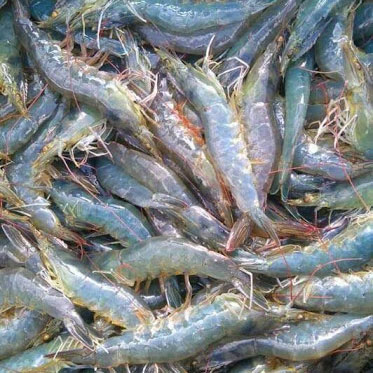

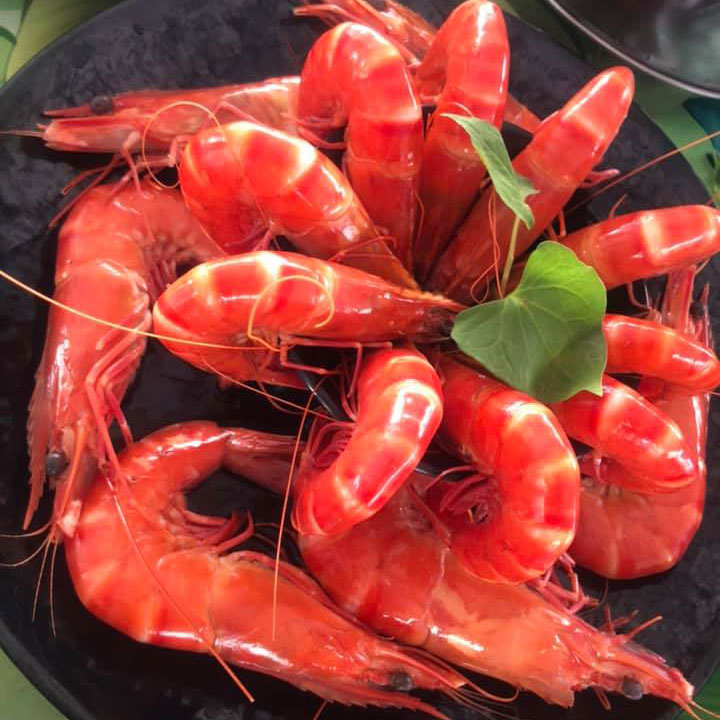

Nutrients supplement:
Nutrition supplement products are used to adding to feed to fulfill shrimp demands, help shrimp absorb nutrition more efficiently or prevents intestinal and hetopancreas problems.
Dose of using products is described on label.
| GROUPS | PRODUCTS | FUNCTIONS and FREQUENCY of USE |
| VITAMINS (chose one product each time) | APA VITA F APA CODA |
All shrimp age: Use daily. |
| APA C MAX APA MAX |
2-3 days/week or when shrimp is stress. | |
| ADDITIONAL NUTRITION (chose one product, mixing alone) | APA BIG ONE | Post larva (1-4 weeks): use daily. Juvenile, adults: 2-3 days/week or when shrimp grow slowly. |
| APA AMIN B APA LIVER PRO APA LIVER BEST APA MELY |
Juvenile, adults: use 2/3 days weekly (to improve grow or after disease treatment, hepatopancreas protection). | |
| APA VAXI F | Use when treatment and prevention disease of hetopancrease and gut. | |
| MINERAL SUPPLEMENTS (Not compulsory) | APA CALPHOS | Daily use in low salinity or high-density pond. |
| APA MINER POX | When shrimp lack of mineral, help shrimp molting. | |
| APA LIWHITE | When need to supply iron. | |
| PROBIOTICS AND ENZYMES (chose one or combine feeding at different times) | APA PRO | Use daily. |
| APA 6S APA SUN ZYME APA MEN S |
||
| APA LACTO F | 2-3 days/week use or when shrimp have gut disease. |
II. REFERENCES
List of products
| No | Product |
| 1 | APA Aqua Blue |
| 2 | APA Blue No.1 |
| 3 | APA Clear 900 |
| 4 | APA Extra Yucca |
| 5 | APA Iron Vip |
| 6 | APA Ivetex |
| 7 | APA Kill Algae |
| 8 | APA Ls 600h |
| 9 | APA NO2 Bzt |
| 10 | APA N 900 |
| 11 | APA Win |
| 23 | APA Yucca Vip 1 |
| No | Product |
| 1 | APA 6S |
| 2 | APA Betacan |
| 3 | APA Big One |
| 4 | APA C Max |
| 5 | APA Coda |
| 6 | APA Calphos |
| 7 | APA Hepaglucal |
| 8 | APA Lacto F |
| 9 | APA Liwhite |
| 10 | APA Liverbest |
| 11 | APA Liver Fe |
| 12 | APA Liver Pro |
| 13 | APA Max |
| 14 | APA Men S |
| 15 | APA Mely |
| 16 | APA Min B |
| 17 | APA Pro |
| 18 | APA Sil Calci |
| 19 | APA Sun Zyme |
| 20 | APA Vaxi F |
| 21 | APA Vita F |
| No | Product |
| 1 | Axisto |
| 2 | APA Comax |
| 3 | APA Colistam |
| 4 | APA Cotrim 48 |
| 5 | APA Doxyl 10 |
| 6 | APA Doxyl 40 |
| 7 | APA Ebom |
| 8 | APA Ery |
| 9 | APA Fenfor |
| 10 | APA Flofe 40 |
| 11 | APA Fishspore |
| 12 | APA Genta Pro |
| 13 | APA Ivemax |
| 14 | APA Kill Porine |
| 15 | APA Levo |
| 16 | APA Pentax |
| 17 | APA Repo |
| 18 | APA Sulim |
| 19 | APA Sulor |
| 20 | APA Super Cefur |
| 21 | APA Taka |
[:]


